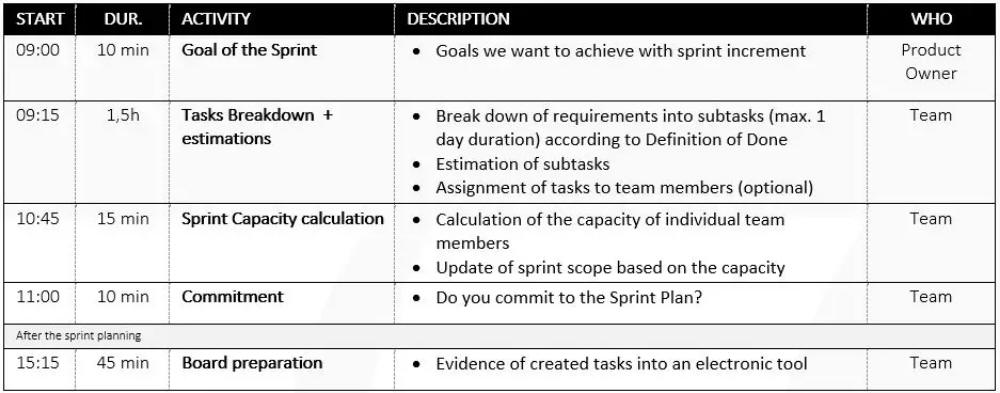
Frameworks - a look at some frameworks before going forward
Doing Work - using SAFe: team backlog, iteration planning, user story and how to size, daily stand-up, system demo, iteration retrospective
High-level Plan to Start Sprinting
| Phase | Step |
| 1 - First Time |
There's some responsibility for setting up the Tool(s) needed to get going:
|
| 2 - Getting Sprint Ready |
|
| 3 - Sprint Start |
|
| 4 - End Sprint |
|
| 5 - Repeat | At this point, the team should be repeating sprint planning |
Reference: https://www.scrumdesk.com/start/manual-for-scrumdesk-start/sprint-planning/
Sprint Planning Agenda:

What a 2 week sprint may look like, this shows one from start to finish, not including weekend:
| Wednesday | Thursday | Friday | Monday | Tuesday | Wednesday | Thursday | Friday | Monday | Tuesday |
| Standup (15 mins) IterationPlanning (1.5 hrs) |
Demo (30 min) | Standup | Standup | BacklogRefinement (1.5 hrs) | Standup Arch Review |
Standup | Standup | Standup | BacklogRefinement |
Resource:
Planning Poker (doesn't require login) https://estim8.cards/
Planning Poker alternate (doesn't require login) https://planningpokeronline.com/new-game/
Planning Poker (doesn't require login)
https://planningpoker.cc/
Echometer Retro (doesn't require login) https://my.echometerapp.com/retro-setup/theme?template=keep-stop-start
EasyRetro: https://easyretro.io/